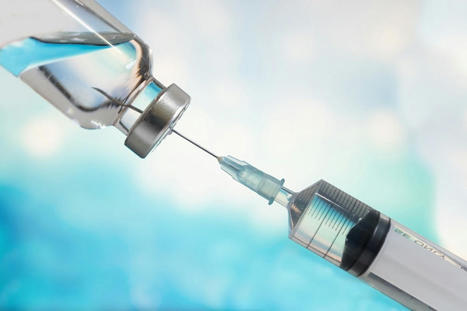
|
Scooped by Juan Lama |
The Achilles heel of the best available antiviral mRNA vaccines and biomolecular drugs includes the loss of their potency due to viral mutations and thermal exposure. Chiral L- or D-penicillamine-coated CuS nanoparticles (NPs) provide an additional pathway to address these problems. The geometric complementary of their twisted conical shape to the spike protein of SARS-CoV-2 results in agglutination of the virus with antibody-like efficiency. Strong nanoparticle–protein interactions lead to broad-spectrum antiviral activity for several SARS-CoV-2 variants. An inhalable nano-formulation effectively protected mice from SARS-CoV-2 infection for 72 h. The combination of temperature robustness, curative capabilities, and broad activity makes possible utilization of chiral NPs as rapid-deployment antivirals for first responders and emergency biomedical stockpiles for potential pandemics.
The incessant mutations of viruses, variable immune responses, and likely emergence of new viral threats necessitate multiple approaches to novel antiviral therapeutics. Furthermore, the new antiviral agents should have broad-spectrum activity and be environmentally stable. Here, we show that biocompatible tapered CuS nanoparticles (NPs) efficiently agglutinate coronaviruses with binding affinity dependent on the chirality of surface ligands and particle shape. L-penicillamine-stabilized NPs with left-handed curved apexes display half-maximal inhibitory concentrations (IC50) as low as 0.66 pM (1.4 ng/mL) and 0.57 pM (1.2 ng/mL) for pseudo-type SARS-CoV-2 viruses and wild-type Wuhan-1 SARS-CoV-2 viruses, respectively, which are about 1,100 times lower than those for antibodies (0.73 nM).
Benefiting from strong NPs–protein interactions, the same particles are also effective against other strains of coronaviruses, such as HCoV-HKU1, HCoV-OC43, HCoV-NL63, and SARS-CoV-2 Omicron variants with IC50 values below 10 pM (21.8 ng/mL). Considering rapid response to outbreaks, exposure to elevated temperatures causes no change in the antiviral activity of NPs while antibodies are completely deactivated. Testing in mice indicates that the chirality-optimized NPs can serve as thermally stable analogs of antiviral biologics complementing the current spectrum of treatments.
Published in PNAS (Jan. 19, 2024):
No comment yet.
Sign up to comment



 Your new post is loading...
Your new post is loading...








